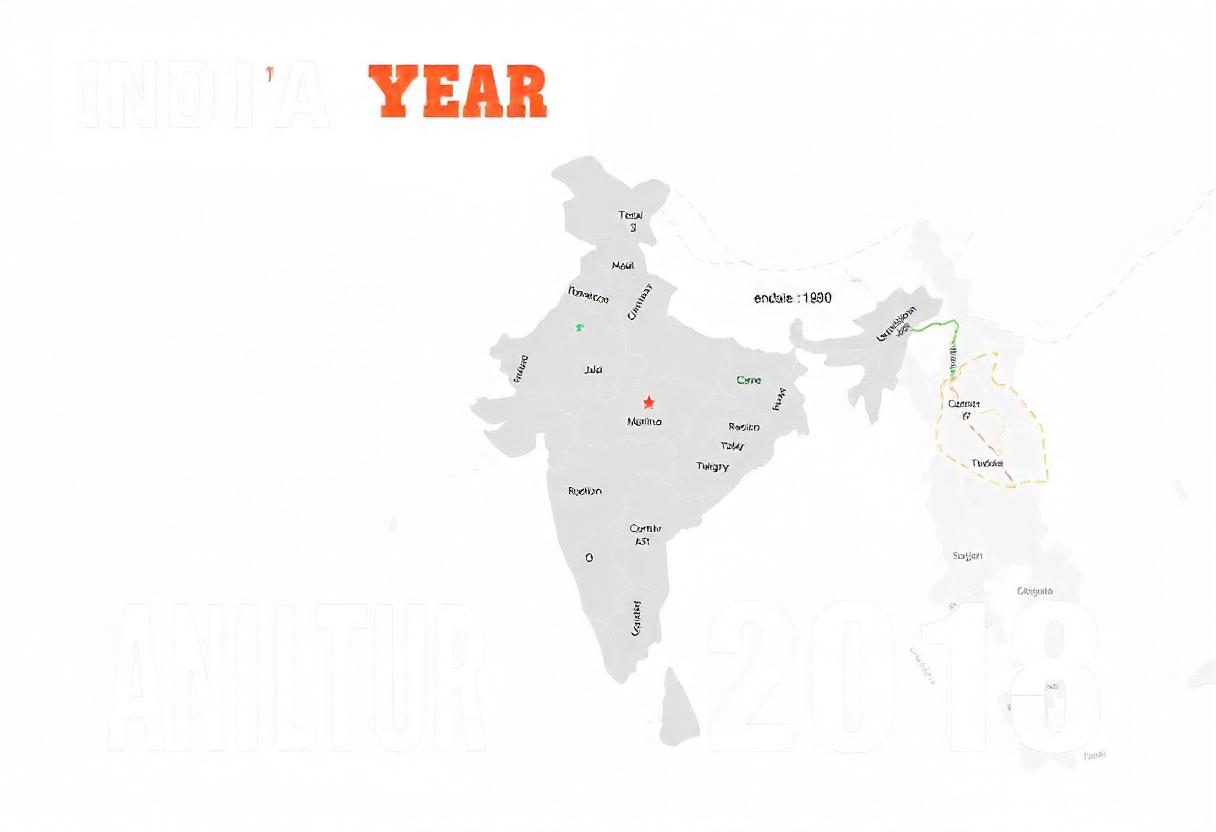
The agricultural year in India is structured around the monsoon season and the crop calendar, reflecting the diverse climatic conditions across the country. Indian agriculture is largely dependent on the southwest and northeast monsoons, which determine the sowing and harvesting periods for various crops. The agricultural year is divided into two primary seasons: Kharif and Rabi.
Kharif Season
The Kharif season, also known as the southwest monsoon season, typically begins with the onset of the monsoon rains around June and extends through October. This season is crucial for the cultivation of crops that depend on ample rainfall.
- Sowing Period: Sowing for Kharif crops generally starts in June, coinciding with the arrival of the monsoon. Farmers prepare the land and sow seeds as the rains begin to nourish the soil.
- Crops: Key Kharif crops include rice, maize, sorghum (jowar), pearl millet (bajra), cotton, and various pulses and oilseeds. Rice is the staple crop for this season, particularly in regions with abundant water availability.
- Harvesting: Harvesting of Kharif crops begins around September and continues until December, depending on the crop and region. The timing of harvesting is closely aligned with the end of the monsoon season.
Rabi Season
The Rabi season, also known as the winter season, spans from October to March. This season follows the Kharif season and benefits from the residual moisture in the soil.
- Sowing Period: Sowing for Rabi crops typically starts in October, once the monsoon rains have ended and the weather becomes cooler. Farmers use the moisture stored in the soil from the monsoon to grow Rabi crops.
- Crops: Major Rabi crops include wheat, barley, peas, gram, and mustard. These crops are well-suited to cooler temperatures and drier conditions compared to Kharif crops.
- Harvesting: Harvesting of Rabi crops occurs from March to June, as the weather warms up and the crops mature. The harvest period varies based on the specific crop and geographical location.
Summer Season
In addition to the Kharif and Rabi seasons, the summer season, which extends from April to June, plays a critical role in preparation for the Kharif season.
- Preparation: During the summer months, farmers focus on land preparation for the upcoming Kharif season. This includes plowing, leveling, and enriching the soil to ensure optimal conditions for sowing.
- Irrigation: In regions where monsoon rains are insufficient, farmers may rely on irrigation to maintain soil moisture and support the growth of summer crops. This is particularly important in areas with erratic rainfall patterns.
Impact of Monsoons
The timing and intensity of the monsoon rains are vital to the success of the agricultural year in India. Variations in monsoon patterns can significantly impact crop yields and agricultural productivity.
- Onset of Monsoon: The onset and progress of the monsoon are closely monitored as they determine the sowing schedules for Kharif crops. Delayed or insufficient rains can lead to reduced crop yields and require farmers to adapt their strategies.
- Floods and Droughts: Extreme weather events, such as floods or droughts, can disrupt the agricultural calendar and affect crop production. Farmers often use weather forecasts and climate data to manage these risks and make informed decisions.
Regional Variations
India’s diverse climatic and geographical conditions lead to variations in the agricultural calendar across different regions.
- Northern India: In regions like Punjab, Haryana, and Uttar Pradesh, the Rabi season is prominent due to cooler winters, while the Kharif season benefits from the monsoon rains.
- Southern India: In states like Tamil Nadu and Kerala, the agricultural calendar is influenced by the southwest and northeast monsoons, with significant overlap between Kharif and Rabi cropping periods.
- Eastern India: Areas such as West Bengal and Assam experience heavy rainfall during the monsoon, supporting the cultivation of rice and other Kharif crops.
- Western India: Gujarat and Maharashtra have diverse agricultural practices due to varying rainfall patterns and water availability, impacting both Kharif and Rabi crop cycles.
Understanding the agricultural year in India is essential for farmers, policymakers, and stakeholders in the agricultural sector. It helps in planning and managing crop production, addressing challenges related to weather patterns, and optimizing resource use for sustainable agriculture.